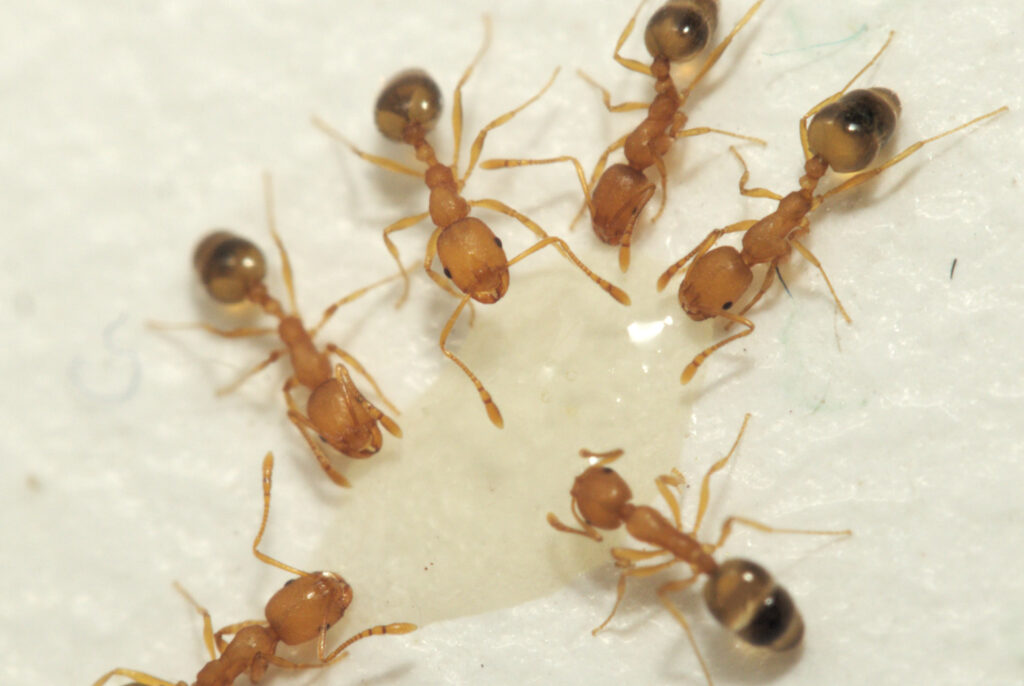
Appearance
Pharaoh ants (Monomorium pharaonis) are tiny, measuring about 1/16 inch long, with a yellow to light brown coloration. Their small size and color make them easily overlooked but can lead to significant infestations if not controlled.
Pharaoh Ants Habitat and Behavior
These ants are commonly found indoors, nesting in hard-to-reach areas such as wall voids, ceilings, under floors, and foundations. They can also establish trails over considerable distances. Pharaoh ants are omnivorous, feeding on various substances, but they have a preference for greasy and oily foods. Their most frequent locations in homes include kitchens and bathrooms. Notably, they are adept at traveling through electrical conduits, which can complicate control efforts.
Controlling Pharaoh Ants
Controlling Pharaoh ants can be quite challenging due to their ability to quickly form satellite colonies in response to treatment. Here are essential steps for effective control:
- Accurate Identification: It is crucial to confirm the presence of Pharaoh ants before initiating control measures.
- Comprehensive Treatment: A combination of baits, sprays, and dust should be thoroughly applied in cracks, crevices, and other areas where these ants are active. Regular monitoring and treatment over an extended period (up to two years) may be necessary to eliminate these persistent pests.
- Bait Placement: Position baits along established trails and entry points where Pharaoh ants are frequently observed. Effective baiting is critical for disrupting their foraging behavior and reducing colony size.
General Ant Information
Ants belong to the order Hymenoptera, which includes bees and wasps, and are among the most numerous terrestrial animals on Earth. Their success can be attributed to their social structure, ability to adapt to diverse environments, and the division of labor within colonies.
Anatomy of Ants
Ants have a distinctive anatomy that sets them apart from other insects. Key features include:
- Antennae: Elbowed and highly sensitive, ants use their antennae for touch and smell, which are vital for communication and navigation.
- Mandibles: These strong jaws serve multiple functions, including carrying food and defending the colony.
- Legs: Ants possess specialized spurs on their legs to help them clean their antennae and bodies.
Life Cycle and Colony Structure
Ants undergo complete metamorphosis, developing from egg to larva to pupa, and finally to adult. Their colonies consist of three main castes: workers, males, and queens, each playing distinct roles.
- Workers: Sterile females that perform all colony duties, from foraging to nest maintenance.
- Males: Winged and short-lived, their primary role is to mate with the queen.
- Queens: Typically the largest in the colony, they can live for many years and are responsible for egg-laying.
Pharaoh ants, in particular, exemplify the complex social structure and adaptability of ants. Understanding their biology and behavior is essential for effective pest management. If you suspect an infestation, contact us or a local pest control professional to help address the issue promptly and effectively.
